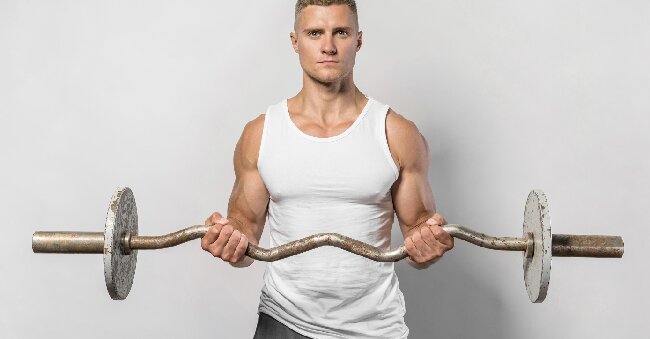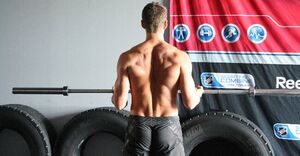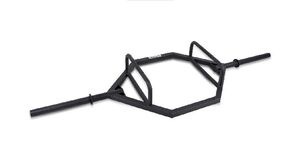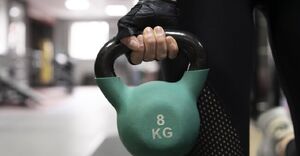
Ergonomics of Curling: How to Prevent Injury with Proper Curl Barbell Form
Looking to improve your bicep muscles while reducing strain on your forearms and wrists? Curl barbells could be the solution you need.
We will explore what curling is, the benefits of using a curl barbell, potential risks, proper form techniques, and common mistakes to avoid.
Understanding the ergonomics of curling and practicing proper form can help prevent injuries and maximize workout effectiveness. Let’s dive in!
What Is Curling?
Curling is a sport that involves players sliding stones on a sheet of ice towards a target area which is segmented into four concentric circles.
The origins of curling can be traced back to the 16th century Scotland, where it was played on frozen ponds and lochs. Over time, the game evolved into a structured sport with formalized rules.
The objective of curling is to score points by getting your team’s stones closest to the center of the target area, known as the ‘house‘. Players use brooms to sweep the ice in front of the sliding stone, which can influence its speed and direction.
Each team consists of four players, with each player taking turns to throw and sweep. Proper footwear, typically with grips on the soles, is crucial to maintain traction on the ice surface. The strategic aspects of curling come into play as teams plan their shots to outmaneuver their opponents and secure victory.
What Is a Curl Barbell?
A curl barbell is a piece of fitness equipment designed specifically for bicep curls and other arm exercises. It typically has a curved shape to allow for a more natural grip and wrist position during lifting.
This unique design of the curl barbell helps to reduce strain on the wrists and forearms, making it a popular choice among weightlifters and fitness enthusiasts. The ergonomic grip promotes proper form and targeting of the bicep muscles, ensuring a more effective workout.
Curl barbells are versatile tools that can be used not only for bicep curls but also for tricep extensions, upright rows, and shoulder presses, offering a comprehensive upper body workout. Incorporating curl barbells into your strength training routine can help improve muscle definition, strength, and overall fitness levels.
What Are the Benefits of Using a Curl Barbell?
Using a curl barbell offers various benefits, including isolating bicep muscles, reducing strain on forearms and wrists, and allowing for heavier lifts which contribute to muscle growth and strength development.
These advantages make curl barbells a valuable addition to any fitness routine. By specifically targeting the bicep muscles, users can achieve more defined and sculpted arms. The reduced strain on forearms and wrists assists in maintaining proper form throughout exercises, decreasing the risk of injury and ensuring optimal muscle engagement. The ability to lift heavier weights with a curl barbell enhances overall workout efficiency, leading to more significant gains in strength and muscle mass. This amplifies the effectiveness of strength training programs and accelerates progress towards fitness goals.
Isolates Bicep Muscles
When using a curl barbell, it specifically targets and isolates the bicep muscles, helping to enhance muscle definition and strength in the upper arms.
This targeted focus on the biceps during curl barbell exercises is crucial for maximizing muscle engagement and growth. Proper technique, such as maintaining a stable core and controlling the movement to avoid swinging or momentum, is essential to prevent muscle strain and ensure efficient muscle activation.
By curling the barbell with a controlled motion, the biceps are effectively isolated, leading to a more effective workout. It’s important to emphasize quality over quantity, focusing on the mind-muscle connection to fully engage the biceps throughout each repetition.
Reduces Strain on Forearms and Wrists
The design of a curl barbell reduces strain on the forearms and wrists by allowing for a more natural and comfortable grip, thereby minimizing the risk of injury during arm workouts.
This ergonomic design of curl barbells also helps in promoting proper body mechanics while performing bicep curls and other arm exercises. By positioning the hands at a slight angle, the curl barbell encourages the natural alignment of the wrists and elbows, reducing the stress on these joints. This not only enhances the effectiveness of the workout but also decreases the chances of overuse injuries commonly associated with repetitive movements. In addition, the curved shape of the curl barbell enables smoother and controlled movements, providing a safer exercise experience for individuals of all fitness levels.
Allows for Heavier Lifts
The use of a curl barbell enables individuals to lift heavier weights than traditional dumbbells, leading to greater strength gains and enhanced conditioning of the bicep and forearm muscles.
Incorporating curl barbells into training routines is a strategic way to implement progressive overload, which is crucial for continually challenging and improving muscle strength. By gradually increasing the resistance over time, individuals can push their muscles to adapt and grow stronger.
Focusing on proper form when using curl barbells ensures that the targeted muscles are effectively engaged, reducing the risk of injury and maximizing the benefits of each rep. This attention to form also translates to improved athletic performance, as better muscle coordination and control can lead to enhanced power and agility.
What Are the Risks of Using a Curl Barbell?
While using a curl barbell can offer numerous benefits, there are inherent risks involved, such as strains and injuries to the bicep muscles, forearms, wrists, back, and shoulders.
These injuries are commonly caused by improper form, overexertion, or using weights that are too heavy. To prevent such injuries, it is crucial to ensure proper technique and form when performing curl barbell exercises. This includes maintaining a neutral spine, engaging core muscles, and using a weight that is appropriate for your fitness level.
Incorporating adequate warm-up and cool-down routines can help reduce the risk of muscle strains and tears. Prioritizing exercise safety and listening to your body’s signals of discomfort are essential components of injury prevention strategies in sports and fitness routines.
Strains and Injuries to Bicep Muscles
One of the risks of using a curl barbell is the possibility of strains and injuries to the bicep muscles, which can impact overall musculoskeletal health and athletic performance.
Bicep muscle strains during curl barbell exercises can range from minor overuse injuries to more severe tears in the muscle fibers. Common types of bicep injuries include tendinitis, muscle strains, and in severe cases, a complete rupture of the bicep tendon. To prevent these injuries, it is crucial to warm up properly before engaging in heavy lifting, maintain proper form throughout the exercise, and gradually increase the weight and intensity of your workouts. Incorporating stretching and strengthening exercises for the biceps and surrounding muscles can help improve flexibility and prevent strain.
Strains and Injuries to Forearm and Wrist Muscles
Using a curl barbell incorrectly can lead to strains and injuries in the forearm and wrist muscles, affecting daily fitness routines and potentially causing long-term issues if not addressed promptly.
One of the common mistakes people make when using a curl barbell is gripping the bar too tightly, which can put excessive strain on the forearm and wrist muscles. Performing curls with improper wrist alignment or using too much weight can also lead to potential injuries.
To prevent such issues, individuals should focus on maintaining a neutral wrist position, avoiding excessive wrist extension or flexion. It is also important to gradually increase the weight to build strength and stability in the forearm and wrist muscles. Incorporating wrist and forearm stretches into your warm-up routine can help improve flexibility and reduce the risk of strains and injuries.
Incorporating exercises specifically targeting the forearm and wrist muscles, such as wrist curls and reverse wrist curls, can help strengthen these areas and prevent overuse injuries. By paying attention to proper form and technique, individuals can enjoy their fitness routines while minimizing the risk of forearm and wrist injuries.
Incorrect Form Leading to Back and Shoulder Injuries
Poor form while using a curl barbell can increase the risk of back and shoulder injuries due to improper body mechanics and lifting techniques, highlighting the importance of correct exercise form.
Applying proper form during curl barbell exercises is vital to safeguard the back and shoulders from unnecessary strain and potential injuries. Ensuring a neutral spine, engaging the core muscles, and aligning the shoulders properly can significantly reduce the stress placed on these areas.
It’s crucial to avoid excessive arching or rounding of the back, as this can lead to muscle imbalances and increased risk of strains. By maintaining correct posture and gradually increasing weight while focusing on technique, individuals can protect themselves from common workout-related injuries.
What Is Proper Curl Barbell Form?
Proper curl barbell form involves attention to grip and hand placement, elbow position, and range of motion to ensure optimal muscle engagement and injury prevention during curling workouts.
- When using a curl barbell, it is essential to keep your wrists straight and maintain a neutral spine to avoid unnecessary strain on your joints.
- Maintaining a controlled tempo throughout the exercise not only enhances muscle activation but also reduces the risk of sudden jerky movements that could lead to injuries.
Focus on breathing steadily and exhaling as you lift the barbell to promote proper oxygen flow and stability. Remember, safety should always be a top priority when performing any curling exercises.
Grip and Hand Placement
Maintaining a correct grip and hand placement on the curl barbell is essential for ensuring proper technique and maximizing muscle engagement during bicep curls and arm exercises.
By mastering the grip and hand positioning, individuals can optimize their performance and reduce the risk of injury. Placing the hands slightly wider than shoulder-width apart and maintaining a firm grip throughout the movement helps in stabilizing the wrists and elbows. This not only targets the biceps effectively but also engages the forearms and shoulder muscles. Focusing on keeping the elbows close to the body and avoiding swinging motions ensures that the tension remains on the targeted muscles, promoting strength development and muscle growth.
Elbow Position
Maintaining the correct elbow position while using a curl barbell is crucial for targeting the bicep muscles effectively and minimizing strain, making it essential for safe and productive curling practice.
When performing curl barbell exercises, the positioning of your elbows can significantly impact the outcome of your workout. Keeping your elbows in a fixed position close to your body helps ensure that the biceps are the primary muscles engaged during the movement. This alignment not only optimizes muscle activation but also reduces the risk of strain or injury commonly associated with improper form.
By focusing on maintaining this alignment throughout your sets, you can enhance the effectiveness of the exercise and promote balanced muscle development in your arms.
Range of Motion
Maintaining a full range of motion during curl barbell exercises is key to maximizing strength gains and muscle development, highlighting the importance of incorporating proper lifting techniques for optimal results.
Ensuring that you complete the full extension and contraction phases during bicep curls not only engages the targeted muscles more effectively but also reduces the risk of injury. By moving through the entire range of motion, you activate more muscle fibers, promoting growth and strength development.
Some effective weightlifting techniques to enhance your bicep curls include focusing on controlled movements, avoiding momentum for assistance, and adjusting the weight to a manageable level that challenges your muscles without compromising form.”
How Can You Prevent Injury with Proper Curl Barbell Form?
Preventing injury while using a curl barbell involves essential steps such as warming up and stretching before lifting, gradually increasing weights, focusing on form over weight, and listening to your body to avoid overexertion.
To further safeguard yourself during curl barbell exercises, make sure to adjust your grip according to comfort, maintaining a secure hold throughout the movement to prevent accidental slips or strain. It is also vital to engage your core muscles for stability and support, which can help reduce the risk of back injuries.
Incorporating variations in your curling routine, such as alternating between different angles or using resistance bands, can also challenge your muscles in unique ways and lower the likelihood of repetitive strain injuries.
Warm-Up and Stretch Before Lifting
Engaging in a proper warm-up routine and incorporating stretching exercises before lifting with a curl barbell can help reduce the risk of injury, promote muscle flexibility, and support overall strength development.
By preparing the body through a targeted warm-up, one can increase blood flow to the muscles, which in turn enhances their flexibility and range of motion. When muscles are properly warmed up, they are more responsive to the demands of lifting, reducing the likelihood of strains or tears. Stretching before a curl barbell workout also helps to improve muscle elasticity, allowing for a greater range of motion during exercises and promoting better form. This focus on injury prevention not only safeguards one from immediate harm but also fosters long-term strength gains and muscle health.
Start with Lighter Weights and Gradually Increase
Beginners should start with lighter weights when using a curl barbell and gradually increase the load to avoid muscle strain and ensure proper weightlifting safety measures are followed throughout the training session.
This approach allows individuals to build a solid foundation and technique, reducing the risk of injuries associated with abrupt intensity jumps. Focusing on proper form adherence not only enhances performance but also safeguards against potential muscle imbalances or strains.
As strength progresses, incorporating exercises that target stability and flexibility can further fortify the body’s resilience to prevent injuries. Remember, the key to sustainable progress in weightlifting lies in adopting a structured and progressive approach, prioritizing safety at every step of the training journey.
Focus on Form Over Weight
Emphasizing correct form over lifting heavier weights is crucial in injury prevention education, as it ensures proper muscle engagement, reduces strain, and supports effective athletic training with a curl barbell.
This focus on form not only helps in minimizing the risk of injuries during curl barbell exercises but also contributes significantly to enhancing overall athletic performance. When individuals prioritize proper technique, they are able to target the intended muscle groups more effectively, leading to better strength gains and muscle development. Maintaining good form aids in promoting greater stability and balance, which are essential for preventing accidents or strains that could hinder progress in training programs. By emphasizing form, athletes can improve their performance levels while safeguarding their bodies from unnecessary harm.
Listen to Your Body and Take Breaks When Needed
Listening to your body’s cues and taking breaks when needed during curl barbell workouts is essential for maintaining proper lifting form, avoiding fatigue-related injuries, and receiving personalized fitness advice for optimal performance.
Being in tune with how your body feels can help prevent overexertion and ensure you are lifting with the correct technique.
By incorporating rest intervals, you allow your muscles to recover and reduce the risk of strain or muscle imbalances.
Fitness professionals often emphasize the importance of listening to your body during exercise, as it can guide your form and intensity. This tailored approach to fitness advice takes into account your unique strengths, weaknesses, and goals, helping you progress safely and effectively in your training.
What Are Some Common Mistakes in Curl Barbell Form?
Several common mistakes can occur in curl barbell form, such as swinging the weight, relying on momentum instead of controlled movements, rounding the back, and not utilizing the full range of motion during exercises.
Swinging the weight during curl barbell exercises can lead to cheating the targeted muscles and placing unnecessary strain on the joints. This can hinder the effectiveness of the workout and increase the risk of injury. Relying on momentum instead of focusing on controlled movements diminishes the engagement of the biceps and can result in lower overall muscle activation. Not utilizing the full range of motion limits the muscle fibers’ recruitment and inhibits muscle growth potential. It’s crucial to emphasize proper form, maintain a stable core, and move through the complete range of motion for optimal results in your curling drills.
Swinging the Weight
Swinging the weight while using a curl barbell can compromise form, reduce muscle engagement, and increase the risk of injury, emphasizing the importance of following structured weightlifting programs and exercise safety practices.
To enhance exercise safety, individuals should prioritize proper form correction and focus on injury prevention techniques. Incorporating structured weightlifting programs into their fitness routine can not only improve muscle strength and endurance but also help in maintaining consistent progress. By emphasizing controlled movements and strict adherence to form, weightlifting programs can mitigate the risk of swinging motions and ensure that muscles are effectively targeted during exercises. Seeking guidance from experienced fitness trainers or coaches can provide valuable insights into optimizing workouts for maximum safety and effectiveness.
Using Momentum Instead of Controlled Movements
Choosing momentum over controlled movements with a curl barbell can undermine muscle activation, limit strength gains, and compromise the effectiveness of the workout, highlighting the need for appropriate curling equipment and weightlifting guidance.
Relying on momentum in curl barbell exercises can lead to swinging the weight rather than engaging the targeted muscles fully, reducing the overall efficiency of the exercise. Without proper form and technique, there is an increased risk of injury, especially to the wrists, elbows, and shoulders. It is crucial to select a curl barbell that suits your strength level and goals, along with seeking guidance on proper lifting techniques to maximize muscle engagement and prevent strains.
By incorporating proper curling equipment and following weightlifting guidance, you can enhance your workout experience and ensure consistent progress in building muscle strength.
Rounding the Back
Rounding the back while performing curl barbell exercises can lead to spinal misalignment, muscle imbalances, and reduced strength development, emphasizing the necessity of maintaining proper posture and engaging in strength conditioning.
Incorporating strength conditioning exercises into your workout routine can not only improve your posture but also help in achieving better muscle balance. Strengthening the core muscles, such as the abdominals and lower back, plays a crucial role in supporting the spine and preventing injuries.
By focusing on strength development through targeted exercises, you can enhance your overall fitness level and decrease the risk of back rounding during curl barbell movements. Prioritizing proper form and technique is key to maximizing the benefits of your strength training routine.
Not Using Full Range of Motion
Failing to utilize the full range of motion in curl barbell exercises can limit muscle activation, hinder flexibility gains, and increase the likelihood of injuries, necessitating the implementation of injury avoidance strategies and injury prevention methods.
Incorporating a complete range of motion in bicep curls and other arm exercises with a curl barbell not only helps in maximizing muscle engagement but also plays a crucial role in maintaining joint health and preventing strains. By executing each repetition through a full range of motion, individuals can enhance their muscle strength and flexibility while reducing the risk of imbalances that could lead to overuse injuries. Consistent focus on proper form and technique during arm workouts with a curl barbell is fundamental in safeguarding against potential injuries associated with inadequate range of motion.




No Comments